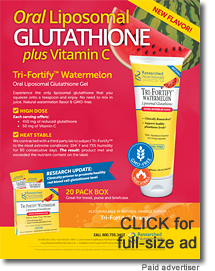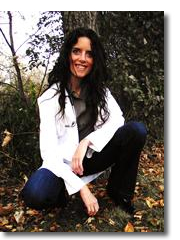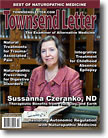Page 1, 2
People with mold illness can be very challenging patients to help. Due to the burden on the kidney and liver detoxification systems, mold/mycotoxic patients can have counter-intuitive reactions to treatment. Taking a lesson from the Salem witch trials, rather than blame the toxic patient for their symptoms, instead maintain focus on individualizing treatment and providing dynamic support. If urine mycotoxin testing is positive for one or more mycotoxins, intranasal nebulized antifungal therapy must be considered. Empirically, it not only remediates the internal environment resulting in a reduction of mycotoxins, it reduces counterintuitive reactions to treatment.22
Intranasal treatment involves nebulizing both an antifungal and a biofilm agent into the sinuses bilaterally, both of which can be incredibly irritating and caustic to nasal tissue. To reduce irritation, each treatment can be separated from the other by 12 hours. Intranasal treatment should be instituted for a minimum of six months, retesting mycotoxins at three months to gauge efficacy of medications selected. Treatment should be continued a minimum of one month beyond negative mycotoxin tests. This is an incredibly challenging treatment for patients. Encouragement will be required by the prescribing practitioner. Intranasal treatments being used in trials currently vary anywhere from amphotericin B to Nystatin, the latter of which seems to have reduced adverse events with similar efficacy. While this is an off-label application of the medicines, it seems to be effective at reducing mycotoxins, leading to the conclusion that intranasal biofilm colonies are compromised or diminished. Some mold-sick people are trying intranasal NAC and/or xylitol with success but studies are needed.23
Systemic antifungal treatments in addition to intranasal treatments have proven to reduce recalcitrance of the fungal colonies, a common complication for the mold exposed patient. Antifungal botanicals shine in this regard for their safety and efficacy profiles. Such plant allies are pau d'arco, olive leaf, oil of oregano, and holy basil; many of which may be used safely in combination with antifungal pharmaceuticals to reduce resistance to treatment.24-27 Pau d'arco has direct antifungal properties similar in strength to amphotericin B at a dose of 1 gram daily or even up to 2 grams daily in divided doses.28 This plant should be avoided in pregnancy.
Being that all mycotoxins deplete glutathione in some fashion, replacing glutathione is paramount in restoring the body's ability to further detoxify ongoing exposure from the environment and internal colonies, as well as seeking a return to vibrant health – a precept of naturopathic medicine. Liposomal or intravenous glutathione may be used to replete depleted stores and may ameliorate respiratory symptoms. Selenium, due to its critical role in glutathione formation, is a prudent supplement to consider, especially given its relative depletion in soil and food.29
Perhaps the most potent neuroprotector in relation to molds and mycotoxins is DHA, or docosahexaenoic acid, an omega-3 fatty acid that is the primary structural part of the brain. In addition to its role in the nervous system, DHA has proven in mycotoxin-specific studies to protect both the liver and the kidneys at a dose of 5-10 grams/kilogram daily. DHA has a very high safety profile. In severe exposure cases, up to 30 grams/kilogram were used safely.30,31
To further assist with the effects of mycotoxins, resveratrol may be used to restore Nrf2 and mitochondrial function. It's also nephroprotective, neuroprotective, and an antioxidant. Resveratrol is extracted from Japanese knotweed. Be cautious of the source as it's often extracted by fermenting the plant with Aspergillus, which will cause reactions in previously mold-sensitized patients. Repeated daily doses of 1 gram daily of trans-resveratrol yielded the desired plasma concentration 25 microM.32
Quercetin and other flavonoids have also been shown to modulate mycotoxin-induced oxidative stress as it relates to Nrf2 expression, NF-kB, and COX-2. In addition, quercetin protects peripheral immune cells from mycotoxin-induced oxidative stress, genotoxicity, and inflammation.33
 Finally, to protect the detoxification organs, the liver, and kidneys, both milk thistle and turmeric have been shown to protect, reduce, and resist damage from mycotoxin exposure.34-36 For some mycotoxins, the benefit was seen most prevalently during the exposure rather than after the fact. Due to their relative safety profile, therefore, persons involved in remediation are generally counseled to take daily prophylactic doses of these two plants, with milk thistle requiring a minimum therapeutic dose of 700 mg/day. Finally, to protect the detoxification organs, the liver, and kidneys, both milk thistle and turmeric have been shown to protect, reduce, and resist damage from mycotoxin exposure.34-36 For some mycotoxins, the benefit was seen most prevalently during the exposure rather than after the fact. Due to their relative safety profile, therefore, persons involved in remediation are generally counseled to take daily prophylactic doses of these two plants, with milk thistle requiring a minimum therapeutic dose of 700 mg/day.
Being that over a quarter of all buildings have water damage, recognizing mold illness, the original indoor environmental illness, should be within all practitioners' minds when meeting with patients. Taken as a totality of symptoms and based on a thorough history of exposure, the picture need not be crystal clear now that testing has provided a more quantifiable way to monitor the illness and progress of treatments. Due to the hazards mold illness poses, practitioners will be saving lives by staying aware.
Page 1, 2
References .pdf
 Dr. Jill Crista Evenson earned her Naturopathic Doctor Degree with Honors from the National College of Natural Medicine in Portland, Oregon, in 2003. For over 10 years, she was director and practicing member of two integrative clinics offering naturopathic medicine, integrative medicine, acupuncture, chiropractic, physical therapy, and massage. Here she witnessed the efficacy and synergy of a team approach to patient care. She's now focusing on research, teaching, and writing. She served on the board of the Wisconsin Naturopathic Doctors Association, including as President for 6 years, and on the AANP committee for licensure, where she gained experience in seeking licensure for naturopathic doctors in Wisconsin and increasing access to healthcare for underserved populations nationally. Dr. Jill Crista Evenson earned her Naturopathic Doctor Degree with Honors from the National College of Natural Medicine in Portland, Oregon, in 2003. For over 10 years, she was director and practicing member of two integrative clinics offering naturopathic medicine, integrative medicine, acupuncture, chiropractic, physical therapy, and massage. Here she witnessed the efficacy and synergy of a team approach to patient care. She's now focusing on research, teaching, and writing. She served on the board of the Wisconsin Naturopathic Doctors Association, including as President for 6 years, and on the AANP committee for licensure, where she gained experience in seeking licensure for naturopathic doctors in Wisconsin and increasing access to healthcare for underserved populations nationally.
Contact: dr.jillcrista@gmail.com
|
![]()
![]()
![]()







 Dr. Jill Crista Evenson earned her Naturopathic Doctor Degree with Honors from the National College of Natural Medicine in Portland, Oregon, in 2003. For over 10 years, she was director and practicing member of two integrative clinics offering naturopathic medicine, integrative medicine, acupuncture, chiropractic, physical therapy, and massage. Here she witnessed the efficacy and synergy of a team approach to patient care. She's now focusing on research, teaching, and writing. She served on the board of the Wisconsin Naturopathic Doctors Association, including as President for 6 years, and on the AANP committee for licensure, where she gained experience in seeking licensure for naturopathic doctors in Wisconsin and increasing access to healthcare for underserved populations nationally.
Dr. Jill Crista Evenson earned her Naturopathic Doctor Degree with Honors from the National College of Natural Medicine in Portland, Oregon, in 2003. For over 10 years, she was director and practicing member of two integrative clinics offering naturopathic medicine, integrative medicine, acupuncture, chiropractic, physical therapy, and massage. Here she witnessed the efficacy and synergy of a team approach to patient care. She's now focusing on research, teaching, and writing. She served on the board of the Wisconsin Naturopathic Doctors Association, including as President for 6 years, and on the AANP committee for licensure, where she gained experience in seeking licensure for naturopathic doctors in Wisconsin and increasing access to healthcare for underserved populations nationally.